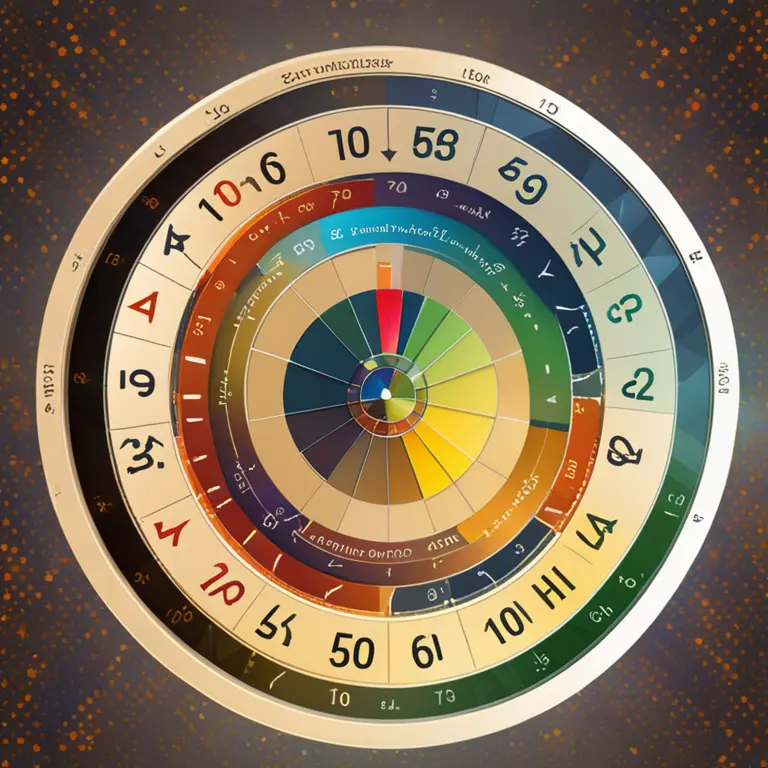
The Basis of Biorhythms: Cyclical Influences on Human Life
Discover what biorhythms are and how they theoretically affect your daily life through inherent biological cycles.
article by Adrian Wallace
Introduction to Biorhythms
Biorhythms are considered as the invisible waves of energy within the human body that are said to affect our physical, emotional, and intellectual capabilities. A concept with origins in the early 20th century, biorhythms are rooted in the idea that human life is influenced by rhythmic biological cycles. Adherents believe that by understanding these cycles, one can anticipate periods of strength or weakness and adapt accordingly. This article delves into the theoretical foundations of biorhythms, exploring how they are calculated and their purported impact on our daily lives.

The Rhythm Trio: Physical, Emotional, Intellectual
Traditionally, biorhythms encompass three primary cycles. The physical cycle, with a period of 23 days, relates to one’s vitality, strength, and overall well-being. The emotional cycle lasts 28 days, akin to the lunar month, influencing creativity, mood, and perception. Finally, the intellectual cycle, completing its course every 33 days, is linked to cognitive functions, decision-making, and alertness. Enthusiasts claim that by charting these cycles, individuals can gain insights into their personal patterns of highs and lows.

The Science Behind The Theory
While the concept of biorhythms holds a certain allure, it is important to note that scientific backing for these patterns is limited. The theory is largely based on anecdotal evidence and the appeal of cyclical patterns found in nature, rather than empirical research. Nevertheless, biorhythms have been popularized in various cultures and continue to intrigue those seeking to understand the mysteries of human existence and potential temporal influences on behavior and experiences.

Calculating Your Biorhythm
To calculate one’s biorhythms, enthusiasts use a person's birth date as the starting point. From there, they count the days to the current date and apply mathematical models to determine the phases of each cycle. There are numerous apps and online calculators that purport to simplify this process, generating personalized charts that project one’s physical, emotional, and intellectual highs and lows over time, providing a forecast for future days or even years, such as those for 2024 and beyond.

Practical Applications
Some biorhythm adherents suggest aligning activities with one’s cycles: engaging in demanding physical tasks during a high phase of the physical cycle, or scheduling important meetings or exams when the intellectual cycle is at a peak. While there’s no solid evidence to support these methods, some people report subjective improvements in their daily lives when considering biorhythms as a planning tool.
Modern-Day Uses and Considerations
In recent years, biorhythms have expanded beyond personal use, finding their place in compatibility assessments and team-building efforts. Advocates suggest that understanding the biorhythms of others can improve relationships and productivity. Regardless of the scientific stance, biorhythms offer an intriguing perspective on personal rhythm and its potential impact, inviting reflection on how we might optimize our lives in alignment with nature's cycles.
Published: 1/30/2024
Modified: 1/30/2024
More predictions
Come back here soon to learn more about yourself and your future


The Harmony of Biorhythm Compatibility: A Guide
Discover how biorhythm compatibility can influence personal relationships and overall well-being in this comprehensive guide.


The Interplay of Biorhythm Compatibility in Relationships
Examine the role of biorhythm compatibility in personal relationships and how it might influence bonding and understanding between individuals.


The Truth About Biorhythm Compatibility
Delve into the concept of biorhythm compatibility to discover if there's a scientific basis behind synchronizing life's rhythms with a partner.